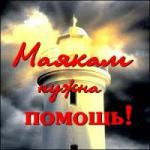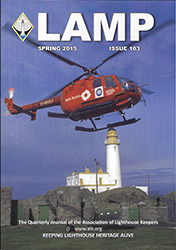 Меня зовут Василий Кораблев, я руководитель некоммерческого проекта «Маячник. Виртуальный музей маяков мира» (www.mayachnik.ru). Благодарю вашу Ассоциацию и журнал за любезно предоставленную возможность немного рассказать о маяках России. Наш проект является крупнейшим в России, хотя и относительно молод (создан в 2008 году). Одной из целей проекта является сбор и сохранение информации о маяках и смотрителях маяков России в виде энциклопедии. К сожалению, о маяках России публикуется достаточно мало информации, по сравнению с другими странами, но мы надеемся, что благодаря деятельности нашего проекта и организуемого Общества любителей маяков удастся привлечь внимание любителей маяков из других стран. Пользуясь возможностью хотел бы передать привет Brigit van den Broek и другим любителям маяков со всего мира, с которыми мы успели познакомиться. Всегда рад помочь вам больше узнать о маяках России. Хотя энциклопедия на русском языке, вы всегда можете использовать Google Translate на нашем сайте.
Меня зовут Василий Кораблев, я руководитель некоммерческого проекта «Маячник. Виртуальный музей маяков мира» (www.mayachnik.ru). Благодарю вашу Ассоциацию и журнал за любезно предоставленную возможность немного рассказать о маяках России. Наш проект является крупнейшим в России, хотя и относительно молод (создан в 2008 году). Одной из целей проекта является сбор и сохранение информации о маяках и смотрителях маяков России в виде энциклопедии. К сожалению, о маяках России публикуется достаточно мало информации, по сравнению с другими странами, но мы надеемся, что благодаря деятельности нашего проекта и организуемого Общества любителей маяков удастся привлечь внимание любителей маяков из других стран. Пользуясь возможностью хотел бы передать привет Brigit van den Broek и другим любителям маяков со всего мира, с которыми мы успели познакомиться. Всегда рад помочь вам больше узнать о маяках России. Хотя энциклопедия на русском языке, вы всегда можете использовать Google Translate на нашем сайте.
Наш проект начинался со сбора информации о маяках, но со временем, общаясь со смотрителями, мы поняли, что об этих людях, совершающих зачастую незримый подвиг, как правило и не упоминают. Красоты маяков скрывают за собой интереснейшие человеческие судьбы. Конечно не мало смотрителей, о которых хотелось бы рассказать, и начнем в этой статье с семьи смотрителей: Начальник маяка «Курбатова» Елена Барбашева и ее муж Владимир (механик), работающих на маяке с 2006 года.
Елена Барбашева с мужем Владимиром и собакой
Маяк Курбатова
Маяк Курбатова
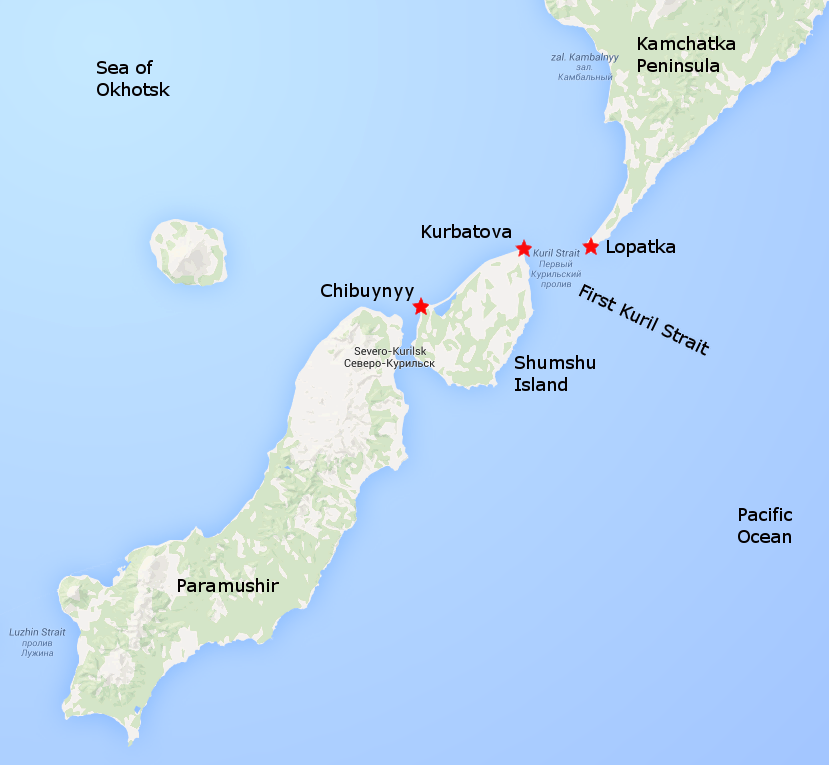 |
Маяк «Курбатова». Краткая справка.
Географические координаты: широта 50°51,9’ N, долгота 156°28,7’ E
Расположение: Курильские острова, остров Шумшу, Охотское море, Тихий океан – 1-й Курильский пролив.
Год постройки башни: 1956
Форма: Красная восьмигранная бетонная башня с фонарным сооружением
Высота сооружения от основания: 15 м. Высота огня от уровня моря: 58 м.
Дальность видимости огня: 16 миль.
|
Вообще на маяке, тем более таком труднодоступном, женщину-смотрителя встретишь не часто. Было интересно узнать, как это случилось у самой Елены.
Disclaimer. Русская версия не планировалась к печати, поэтому для подготовки профессионального английского перевода далее сохранена авторская редакция текста. Правки в русскую версию не вносились, чтобы максимально точно передать "голос" смотрителя маяка. Судя по отзыву экс-смотрителя Объединенного Королевства Gordon Medlicott, это позволило очень точно передать в английской версии атмосферу жизни маячников.
«Желание работать на маяке возникло задолго до того как мы приехали на маяк. Все таки у нас портовый город.
Раньше, когда наш город был закрытой пограничной зоной, все так или иначе были связаны с морем, рыбой, флотом, и всем тем, что обеспечивает работу флота. Поэтому маяки воспринимаются как само собой разумеющееся. Мой отец капитан дальнего плавания. Работал в Камчатском морском пароходстве.
Я девчонкой часто бывала у него на судах, на которых он работал. Владимир - мой муж моряк. Работал боцманом, механиком на судах и даже работал на греческих судах в международных экипажах. В общем о маяках мы знаем много, но только вот как выглядят маяки в России на
самом деле и как налажена работа на них, мы столкнулись когда приехали работать на маяк.
По образованию я юрист. В 2006 году у нас так сложились обстоятельства, что были вынуждены искать новую работу. Три месяца ничего приемлемого найти не удавалось. Тогда очень сложный был период в жизни. Как-то придя на берег бухты я взмолилась, что бы попасть на необитаемый остров, и никого из родственников не
видеть, и жить в тишине и покое. Я тогда еще не знала, что наша Вселенная воспринимает все буквально и мольбы и просьбы тоже.
И пришла мне в голову гениальная мысль, что нужно устроиться на работу на маяк. Не знаю, совпадение ли это или промысел Божий, но когда мы пришли с мужем очередной раз в центр занятости населения, я увидела объявление, что войсковая часть набирает людей для работы в отдаленных точках на маяках. На следующий день мы с мужем уже беседовали с начальником Отдела маячной службы, а уже на следующий день оформились на работу. Когда поднялись на маяк я поняла - мои мольбы услышаны, остров необитаем. На весь остров два маяка и застава».
Елена Барбашева. Автор фото: Юлия Галочкина
Владимир. Автор фото: Юлия Галочкина
Эта статья готовилась больше полугода, т.к. большую часть последнего года связи с маяком у нас не было и последние новости о жизни и быте семьи для читателей вашего журнала удалось узнать благодаря экспедиции Игоря Анатольевича Самарина (автора прекрасной книги «Маяки Сахалина и Курильских островов. Исторический очерк»). Также Елену очень заинтересовала возможность напечатать статью о маяке Курбатова в журнале Ассоциации смотрителей маяков. Вот, что пишет Елена о сегодняшней жизни на маяке.
Елена Барбашева зимой на маяке
«Жизнь наша ничем особенным не отличатся, особенно зимой. У нас появился еще один человек. Вроде мы сработались. Живем дружно. Хотя разногласия возникают. Многие не понимают, почему мы живем и работаем на маяке. Удивляются, и задают странные, с нашей точки зрения, вопросы: «И долго вам еще здесь мучаться?», «Что вы тут делаете за такую зарплату?», «Вы здесь еще не одичали?», «Вам не скучно тут?» «Чем вы тут занимаетесь?» и т.д.
Как объяснить, что мы тут не «мучаемся», и не скучаем, и зарплата имеет второстепенное значение, а забот здесь предостаточно, что здесь не само по себе все включается, выключается, освещается и живет, что работа смотрителя маяка, это скорее состояние души, и выбранного добровольно образа жизни. Не смотря на все трудности, я и мой муж Владимир вполне очень счастливые люди. Мы убеждены, что находимся именно там, где должны. Пусть это будет предназначение или судьба, но именно так мы и относимся к жизни на маяке. Думаю я сейчас, скажу то, о чем поймет только смотритель маяка. Знаете, что годами видя свой маяк, я могу очень долго не уставая смотреть на его свет в ночи. Для смотрителя маяк это не башня с огнем. Он живой. Пульсирующий. Со своим особым ритмом, духом. У каждого маяка имеется как бы своя аура, индивидуальность. Смотритель должен находится в гармонии со своим маяком. Если, человек, пришедший работать на маяк, не вписывается в эту гармонию, он уйдет без особых причин. Когда случается, что выходит из строя автоматика, и затухает огонь, вид потухшего маяка вызывает необъяснимую тоску. Возвращаясь на маяк в темное время суток, завидев свой огонь, всегда подымается настроение, возникает очень теплое чувство родного огня.
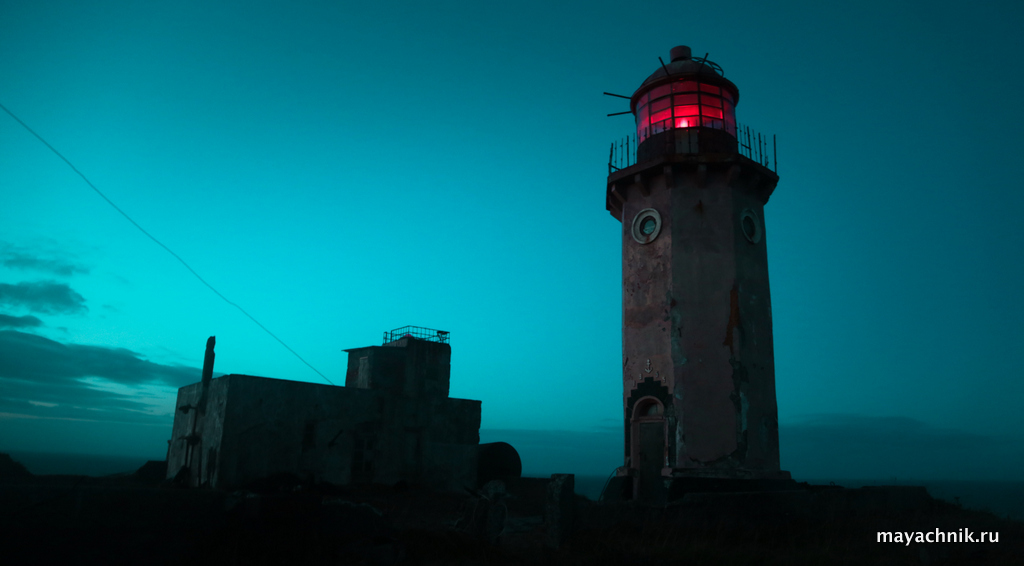
Свет маяка Курбатова. Автор фото: Юлия Галочкина
Ну а если отойти от тонких материй, то работа наша в принципе рутинная. Обеспечение бесперебойной подачи электроэнергии на маячный городок. Работают дизельные электростанции. Обслуживание, ремонт. Текущий ремонт зданий. Циклоны с дождем, мокрым снегом и ветром силой до 50 м/с, а иногда и выше, оказывают весьма разрушительное воздействие на все сооружения. Конечно же, главная задача, это работа маячного огня. Обеспечение навигационной безопасности судов в наших водах. В первом Курильском проливе два огня – наш огонь красный, а на мысе Лопатка белый огонь. Ежедневная связь с управлением и сводка погоды по радиостанции. Таких чудес как сотовая связь и интернет мы не имеем. Правда есть спутниковое телевидение, если ветром не унесет тарелку.
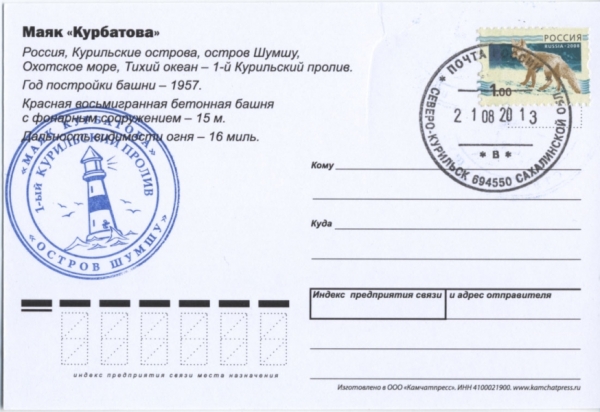
Открытки со спецгашением маяка Курбатова
В рамках акции по сбору средств на спутниковый интернет для маяка Курбатова, проводимой проектом «Виртуальный музей маяков мира», выпущен в свободную продажу ограниченный тираж памятных открыток маяка «Курбатова». Специально для гашения был изготовлен маячный штемпель и в августе 2013 в рамках одной из экспедиций, открытки были проштампованы на маяке Курбатова и в почтовом отделении Северо-Курильска. Все средства от продажи пойдут на организацию интернет-связи с маяком.
Приобрести открытки
Маяк Курбатова. Автор фото: Юлия Галочкина
С ноября до июня мы практически отрезаны от всех. В конце октября начинается сезон штормов, а снег сходит только в мае. Только вертолет по погоде. Снегоход, что бы съездить на соседний маяк. Все снабжение и дизельное топливо завозится летом на целый год. Так что если что-то не продумал и не предусмотрел, жди следующего лета. На медицинскую помощь тоже рассчитывать особо не приходится из-за погодных условий. Вертолет придет не сразу. Поэтому первую помощь мы должны уметь оказывать сами. В общем, работа как работа.
Маяк Курбатова. Вид с моря в тумане на верхушке холма Курбатова острова Шумшу
Владимир зимой на снегоходе за продуктами
Долгими зимними вечерами каждый занимается по своим интересам. Ручные поделки, шитье. Я обычно привожу из отпуска книги. Именно зимой есть время для чтения.
Владимир обслуживает дизель-генератор маяка
Владимир за работой по ремонту и покраске маяка
В личном плане все как у всех. Взрослые дети со своими большими и маленькими проблемами. С родственниками связываемся по спутниковому телефону, а когда уезжаем на другой конец острова, там ловит сотовая связь. Раз в год выезжаем по очереди в отпуск. Решаем накопившиеся проблемы, проходим медицинское обследование, мы с мужем ездим на горячие источники. Мечтаем, фантазируем, строим планы и пытаемся их осуществить. И возвращаемся на маяк всегда с радостным и очень теплым чувством.
Я не знаю, что можно еще добавить. Жизнь течет со своим ритмом. Пока, что с маяка мы уезжать не собираемся. Как дальше сложиться жизнь – посмотрим.»
Владимир на балконе фонарной башни маяка
Дополнительную информацию об истории этой семьи можно узнать на сайте нашего проекта. Всем кому интересно узнать о маяках России и смотрителях маяков, всегда можете связаться с нами по адресу
mayachnik@gmail.com. Мы всегда рады новым знакомствам и общению. И пусть свет маяков еще долгие годы хранит всех мореплавателей!
Фото с 2006 года по 2014 год (авторы фото: Елена Барбашева, Игорь Самарин, Ольга Маурина, Юлия Галочкина). Сейчас маяк, к сожалению, совсем в плачевном состоянии. На следующий год обещают, ремонтную бригаду, если ничего не изменится.
Подробнее об этой интересной семье смаотрителей читайте в статьях:
- Маячная жизнь изнутри. Для тех кто думает стать маячником
- Хотите пожить на маяке? Попробуйте попутешествовать на маяк Курбатова
Отзывы читателей английской версии
I have been the subject of many press articles myself, and have read many reports of others about the trials and tribulations of living in a lighthouses, and I have even contributed similar articles for publication myself, but your article in LAMP 103 has simply ‘blown me away’. This article, for me, epitomises the dedication and mind-set of what lighthouse keeping is all about, and has got to be one of the finest descriptions of what it takes to be a lighthouse keeper that I’ve ever read.
My congratulations and thanks to you for such a memorable piece of writing.
If possible, please convey my best wishes and thanks to Elana and Vladamir for the work they continue to do at the lighthouse.
Gordon Medlicott (ex-lighthouse keeper in the UK and a member of the Association of Lighthouse Keepers)
Lighthouse "Kurbatova". From the history of lighthouses of Russia

Let me introduce myself. My name is Vasily Korablev and I am the head of the non-profit project "Light keeper. Virtual museum of world lighthouses» (www.mayachnik.ru). I thank your Association and the journal for the kindly provided opportunity to tell a little bit about the lighthouses of Russia. Our project is the largest in Russia, although it is relatively young (started in 2008). One of the project goals is to collect and preserve the information of Russian lighthouses and light keepers in encyclopaedic form. Unfortunately, very little information about lighthouses of Russia is published compared with other countries. We hope that our project and the Lighthouse Lovers Society, that is now being organised, help to attract the attention of lighthouse lovers from other countries. Let me take this opportunity to give my best regards to Brigit van den Broek and other lighthouse lovers from around the world with whom we got acquainted. I am always happy to help you learn more about the lighthouses of Russia. The entries of Encyclopedia are all in Russian, although other language version is also supplied through the Google Translate tool on our website.
We started and developed our project by collecting information about lighthouses. However the more we communicated with light keepers, the more we realized that these people who often performed an invisible feat were not usually mentioned.
The beauty of lighthouses conceals amazing human destinies. There are many lighthouse keepers to tell about. In this article I introduce you to one of the light keepers families: Barbasheva Elena, the head of the lighthouse "Kurbatova", and Vladimir, her husband (mechanic), who work at the lighthouse since 2006.
Lighthouse "Kurbatova." Quick reference.
Geographic coordinates: latitude 50051,9’ N, longitude 156028,7’ E
Location: the Kuril Islands, Shumshu, Sea of Okhotsk, the Pacific Ocean – the 1st Kuril Strait.
Year built: 1956
Form: octagonal concrete tower with a lantern room, painted red
Tower height: 15 m.
Focal plane height of a light: 58 m.
Visibility of light: 16 miles.
At the lighthouse you can hardly meet a female keeper, especially at that one which is hard to access. That's why it would be very interesting to know how Elena happened to get there.
"The desire to work at a lighthouse had come to my mind long before we arrived at the lighthouse. We lived in the port city after all. Our city was earlier a closed border zone and, one way or another, all people were involved in the sea life, fishing industry, fleet and had to do with all that provided the fleet. So, lighthouses have always been normal state of things here. My father is a sea captain and he worked in the Kamchatka Shipping Company. Being a little girl I often used to be on the board of the ships where he worked. Vladimir, my husband, is a sailor. He worked as a boatswain and mechanic for the Russian Navy and also worked in international crews of the Greek ships. In general, we know a lot about lighthouses but we have realised what the lighthouses are actually in Russia and how they work only when we have come to work at this lighthouse.
I hold a degree in law. In 2006 it fell out that we were forced to seek new work. We could not find anything eligible for three months. It was a very difficult period in my life. Once having arrived at the embayed shore, I implored to let me get to a desert island, not to meet any of my relatives and live in peace and quiet. At that time I didn’t know that the universe took our thoughts literally as well as all the prayers and requests.
Soon a brilliant idea occurred to me: I needed to get a job at the lighthouse. I don’t know whether it's coincidence or Divine Providence, but once we came to the employment centre with my husband again, a particular announcement caught my eye. It said that the military unit recruited people to work at lighthouses in remote locations. On the following day my husband and I talked to the chief of the Lighthouse Authority Division, and the day after we were employed. When I gained the top of the lighthouse, I realized - my prayers were answered, the island was uninhabited. On the whole island there were two lighthouses and a frontier post. "
This article was prepared for more than six months as we did not have any connection with the lighthouse for most of the year. We managed to learn the latest news about the lifestyle of the family to tell the readers of your magazine due to the expedition of Igor Samarin (the author of the wonderful book "Lighthouses of Sakhalin and the Kuril Islands. Historical sketch"). Elena was also very interested in the opportunity to publish an article about the lighthouse “Kurbatova” in the journal of the Lighthouse Keepers Association.
Here is what Elena writes about today's life at the lighthouse.
"There is nothing special in our life here, especially in winter. We've got one more person and we seem to work well together. We are on friendly terms although sometimes disagreements arise. Many people do not understand why we live and work at the lighthouse. They are usually very surprised and, from our point of view, they ask weird questions: "How long are you here to suffer?", "Why are you here if you get such a salary?", "You have not become wild yet?", " Don’t you get bored here?" "What are you doing here?" etc.
I wonder how we can explain that we don’t suffer here and don’t get bored, the salary is of secondary importance. We have enough worries as everything doesn’t turn itself on and off here, every appliance doesn’t live its own life. The work of the lighthouse keeper is rather a state of mind and a voluntarily chosen lifestyle. Despite all the difficulties, my husband Vladimir and I are very happy. We are convinced that we are exactly where we should be. Let it be our true calling or destiny - that's how we feel about the life at the lighthouse. Now I think I will tell something that only a lighthouse keeper can understand. You know, I have seen my lighthouse for years and I can tirelessly look at its light for a long time at night. For a light keeper his lighthouse is not only a tower with a light. It is alive, pulsating, with its special rhythm and spirit. Every lighthouse has its own aura, its own individuality. The keeper must be in harmony with his lighthouse. If a person, who has come to work at the lighthouse, does not harmonize with it, soon he will leave the work for no particular reason. Sometimes it happens that automation fails, then the lightless lighthouse brings inexplicable melancholy. When I return to the lighthouse at night, its light always boosts my mood and there is a very warm feeling of the home fire.
Well, if we deviate from the subtle matter, our work is rather routine. We ensure uninterrupted power supply to the light attendant station. Diesel power stations are used. Then maintenance, equipment repair, current repair of the constructions are required. Cyclones with rain, sleet and wind force of up to 50 m/s (sometimes higher) have a very devastating impact on all the structures. Of course, the main task is the right work of the watch light to ensure the safe navigation in our waters. At the First Kuril Strait there are two light stations. Our light is red, and at Cape Lopatka the light is white. Another part of our work is daily communication with the management and weather report broadcasts. We don’t have such miracles as cellular communication and the Internet. However, we can use satellite television, if the wind does not carry away the reception dish.
Within the framework of the project "Virtual Museum of world lighthouses" we have launched a fundraising campaign aimed to provide the lighthouse "Kurbatova" with satellite internet. As part of the campaign the limited edition commemorative postcards depicting the lighthouse "Kurbatova" have been put onto the open market. The lighthouse stamp is specially made for the cancellation. In August 2013 due to one of the expeditions the postcards were stamped at the lighthouse "Kurbatova" and at the post office of Severo-Kurilsk. All proceeds from the sale will be used for providing Internet communication.
From November to June, we are practically cut off from the world. Since late October the season of storms begins and snow melts only in May. We can use only a helicopter, depending on the weather, or snowmobile to go to the nearby lighthouse. All year's supplies including diesel fuel are delivered only in summer. So if something is not thought out and provided, we have to wait for next summer. We also cannot entirely count on medical care due to poor weather conditions. The helicopter will not arrive immediately. Therefore we must be able to provide first aid to ourselves. Anyway, routine work.
In the long winter evenings each of us is busy doing the things they like: handicrafts, sewing. I usually bring books returning from my vacation. In winter, in particular, I have time for a long read.
Our private life doesn’t differ much from many others. We have adult children with their big and small problems. We get through to our relatives on the satellite phone. When we go to the other end of the island, mobile communication is available. Once a year we go on vacation one by one. During this period we solve problems and have ourselves carefully examined. We also enjoy going to thermal springs. We dream, fantasize, make plans and try to realize them. And then we go back to the lighthouse always cheery and with a very warm feeling.
I don’t know what else I can add. Life goes on, keeping its own rhythm. We are not going to leave the lighthouse just yet. What will our future life be? We'll see".
You can find more information about the life of this family at our project website. If you are interested in learning more about the Russian lighthouses and light keepers, you can always contact us at
mayachnik@gmail.com. We are always open to new contacts and communication experience. And let the light of lighthouses save all the seafarers for many years!
Photo Gallery 2006 - 2014 (photo by Elena Barbasheva Igor Samarin, Julia Galochkina). Now the lighthouse is, unfortunately, in quite poor condition. Next year they promise to provide repair crew, if nothing changes.
Маяки упоминаемые в материале:
Маячники упоминаемые в материале:

 Меня зовут Василий Кораблев, я руководитель некоммерческого проекта «Маячник. Виртуальный музей маяков мира» (www.mayachnik.ru). Благодарю вашу Ассоциацию и журнал за любезно предоставленную возможность немного рассказать о маяках России. Наш проект является крупнейшим в России, хотя и относительно молод (создан в 2008 году). Одной из целей проекта является сбор и сохранение информации о маяках и смотрителях маяков России в виде энциклопедии. К сожалению, о маяках России публикуется достаточно мало информации, по сравнению с другими странами, но мы надеемся, что благодаря деятельности нашего проекта и организуемого Общества любителей маяков удастся привлечь внимание любителей маяков из других стран. Пользуясь возможностью хотел бы передать привет Brigit van den Broek и другим любителям маяков со всего мира, с которыми мы успели познакомиться. Всегда рад помочь вам больше узнать о маяках России. Хотя энциклопедия на русском языке, вы всегда можете использовать Google Translate на нашем сайте.
Меня зовут Василий Кораблев, я руководитель некоммерческого проекта «Маячник. Виртуальный музей маяков мира» (www.mayachnik.ru). Благодарю вашу Ассоциацию и журнал за любезно предоставленную возможность немного рассказать о маяках России. Наш проект является крупнейшим в России, хотя и относительно молод (создан в 2008 году). Одной из целей проекта является сбор и сохранение информации о маяках и смотрителях маяков России в виде энциклопедии. К сожалению, о маяках России публикуется достаточно мало информации, по сравнению с другими странами, но мы надеемся, что благодаря деятельности нашего проекта и организуемого Общества любителей маяков удастся привлечь внимание любителей маяков из других стран. Пользуясь возможностью хотел бы передать привет Brigit van den Broek и другим любителям маяков со всего мира, с которыми мы успели познакомиться. Всегда рад помочь вам больше узнать о маяках России. Хотя энциклопедия на русском языке, вы всегда можете использовать Google Translate на нашем сайте.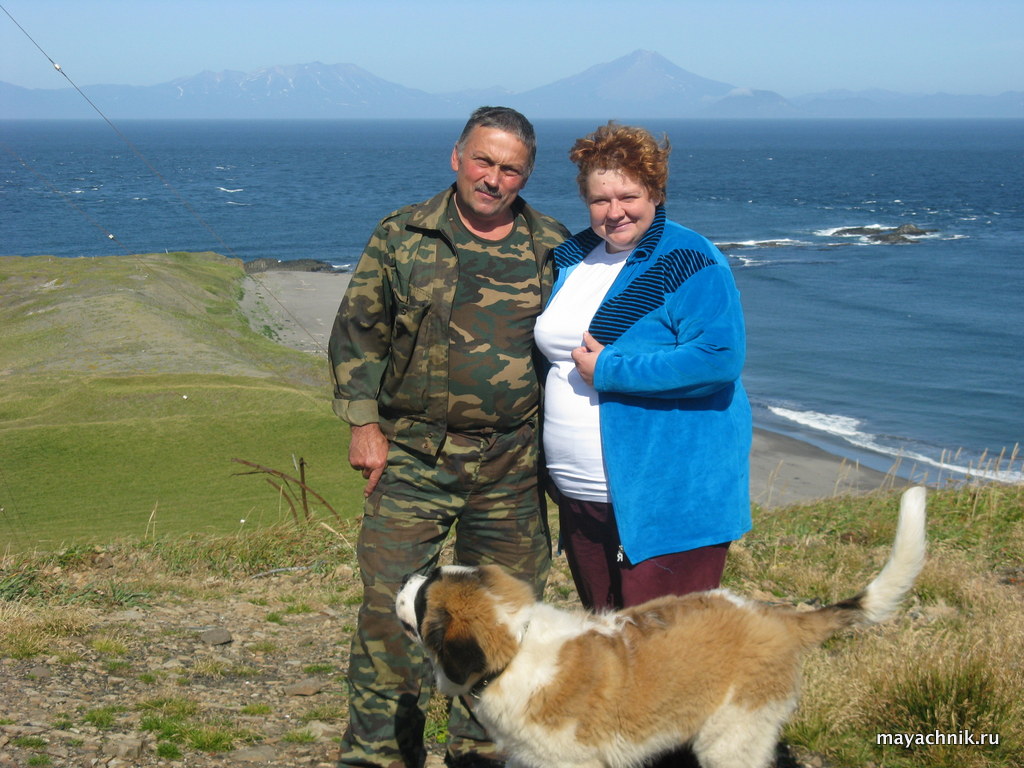
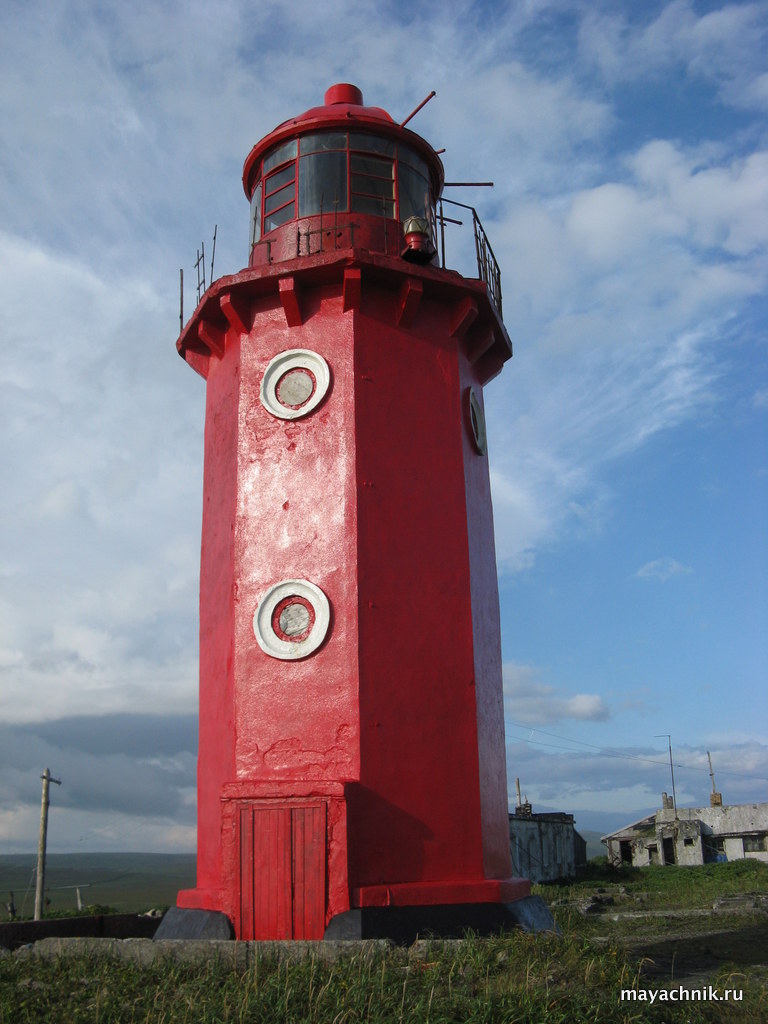
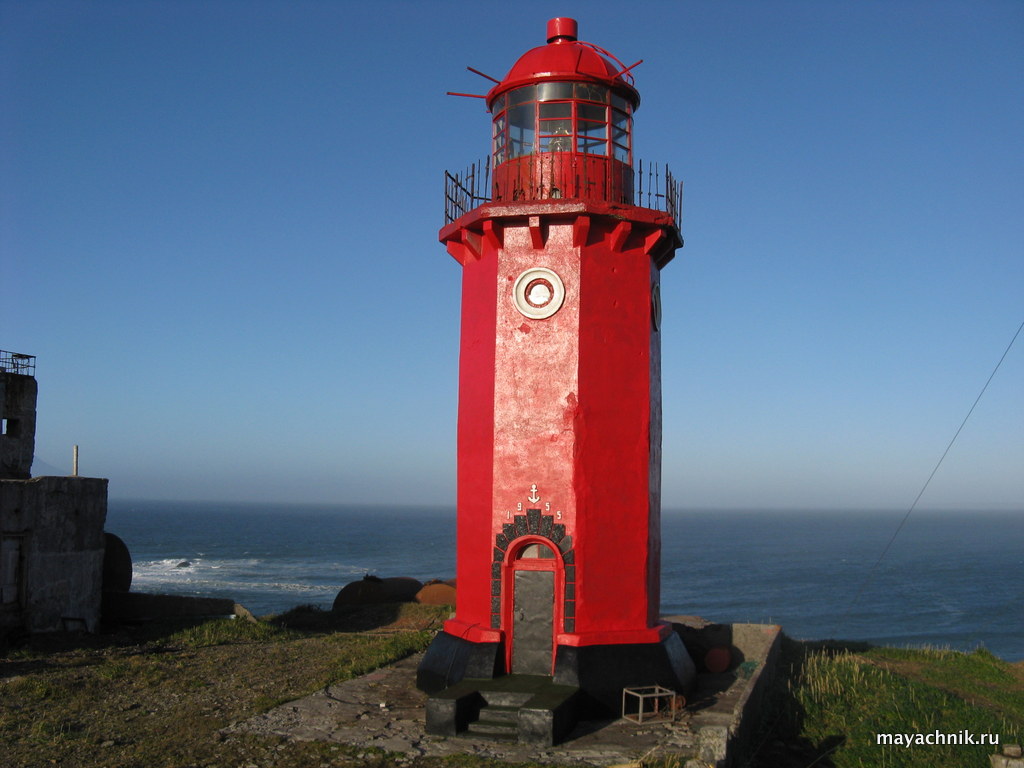


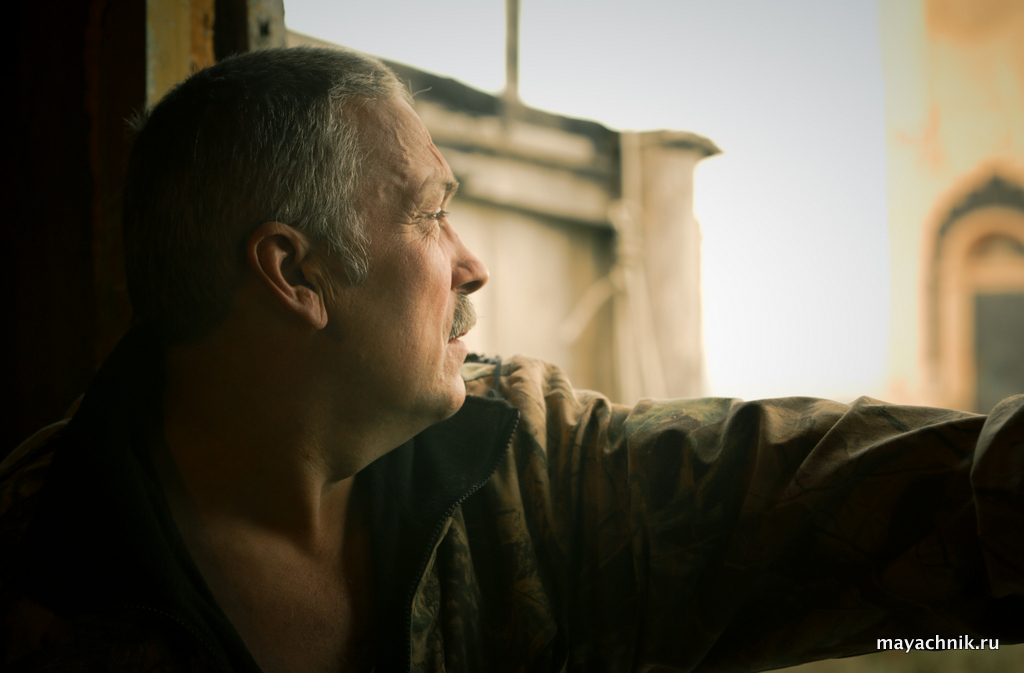
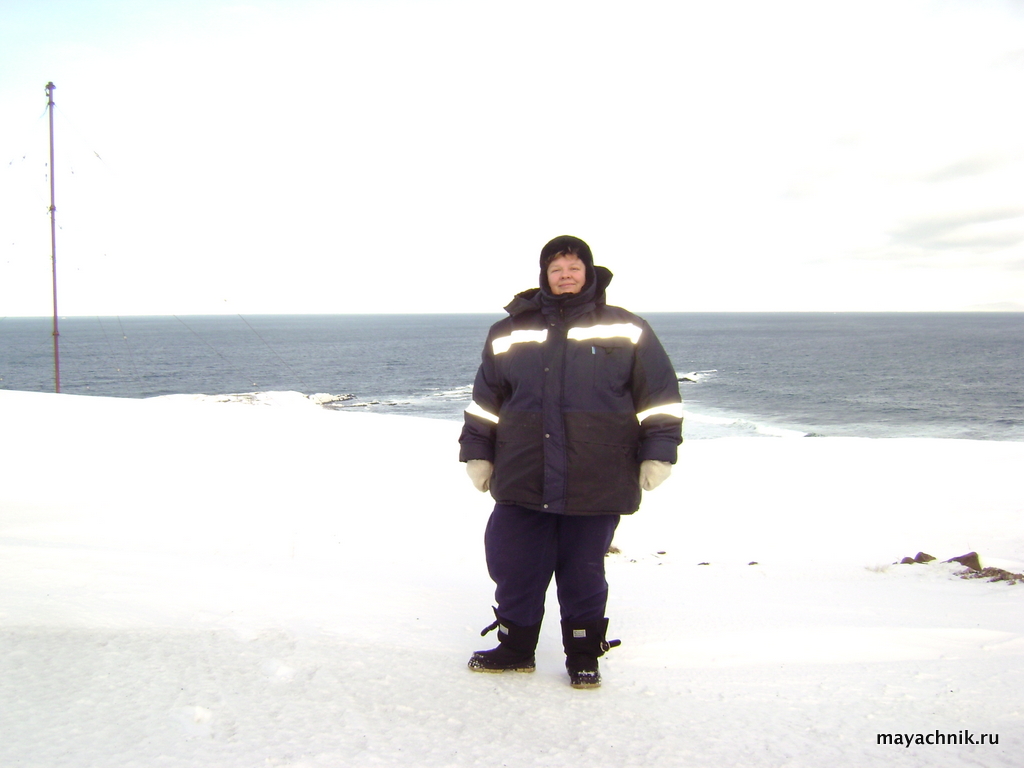

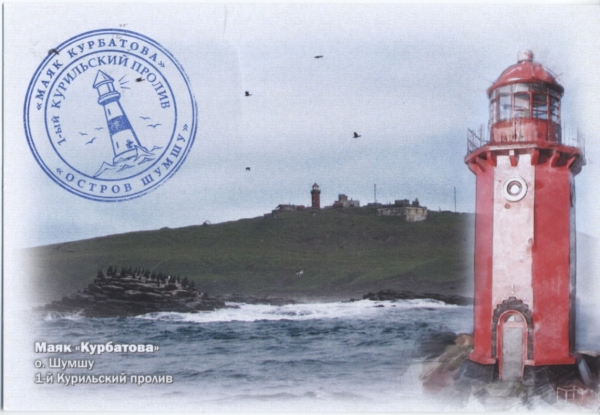

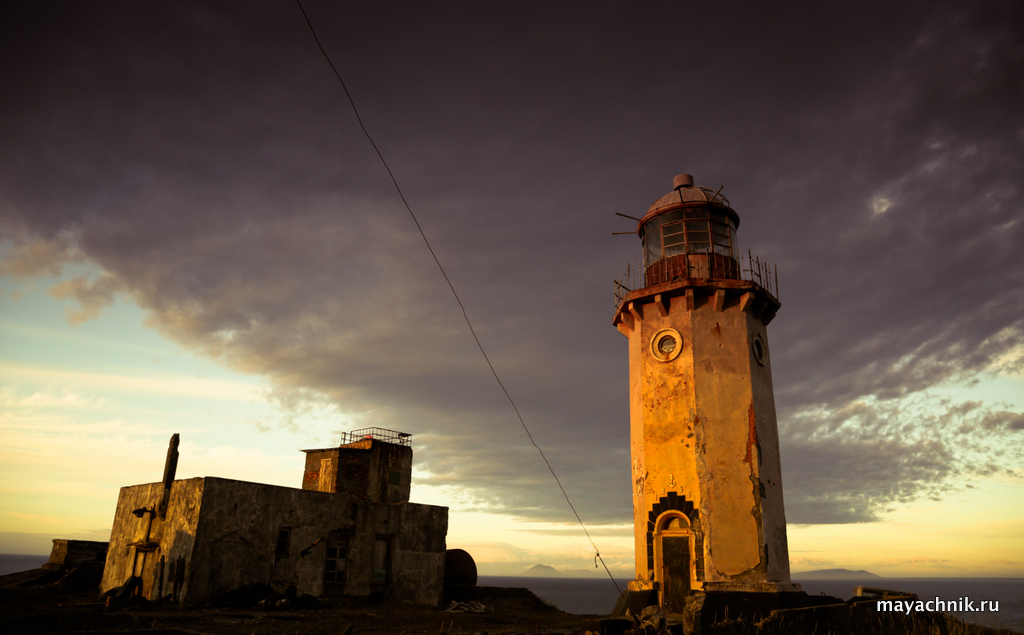
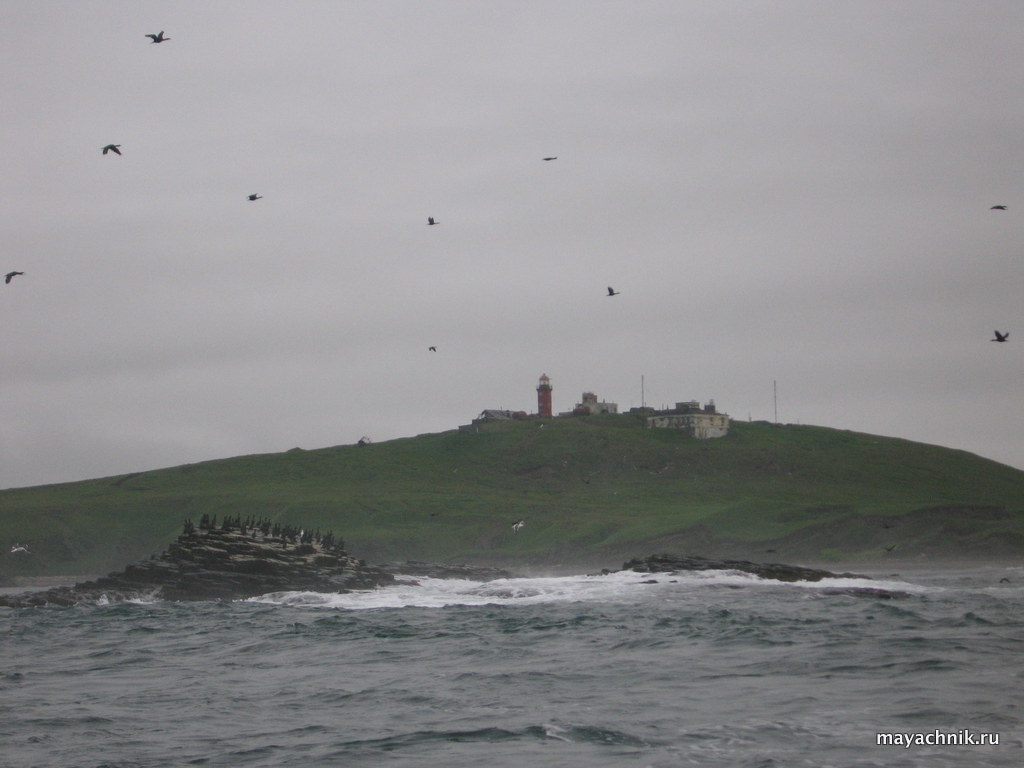
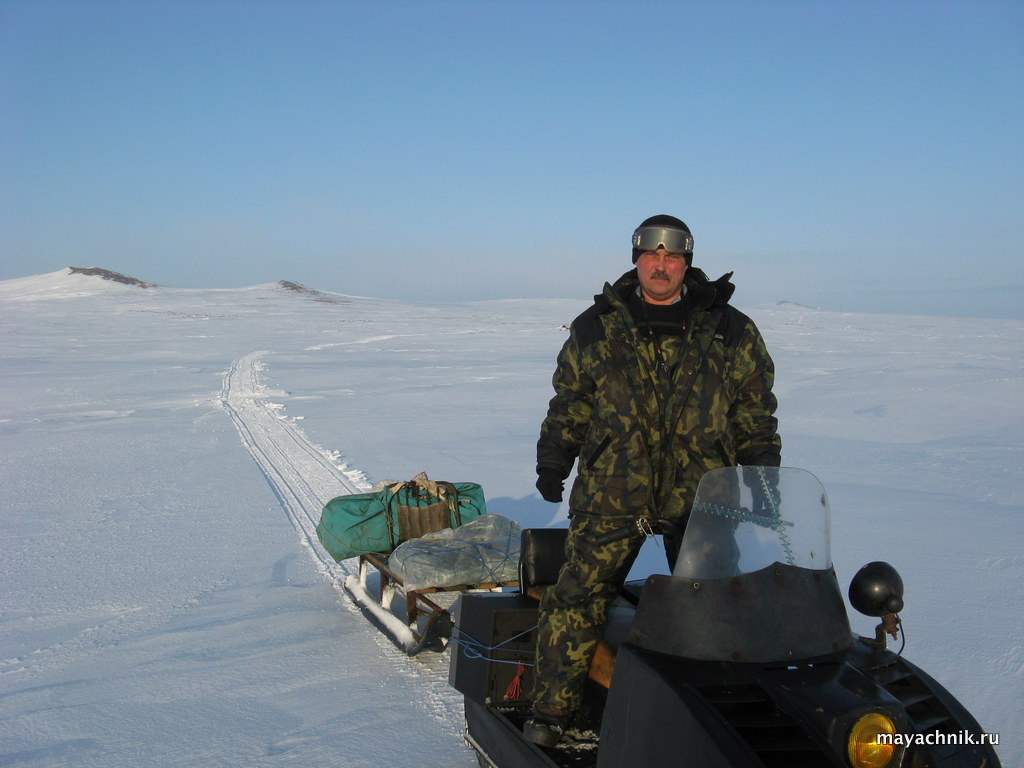
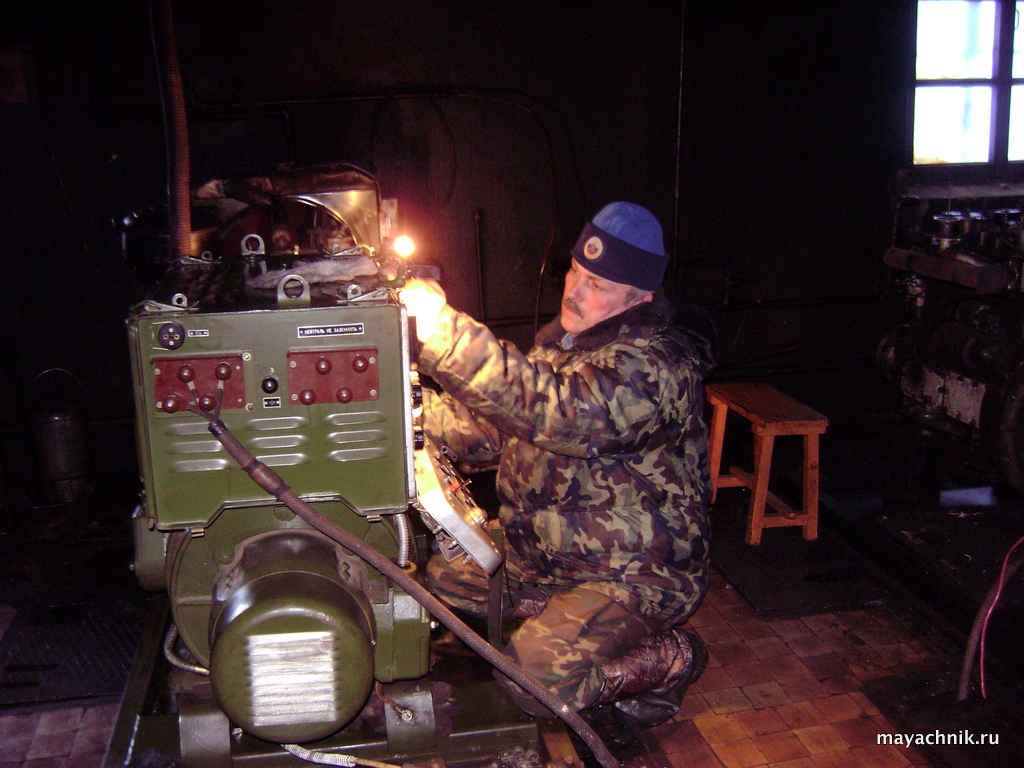

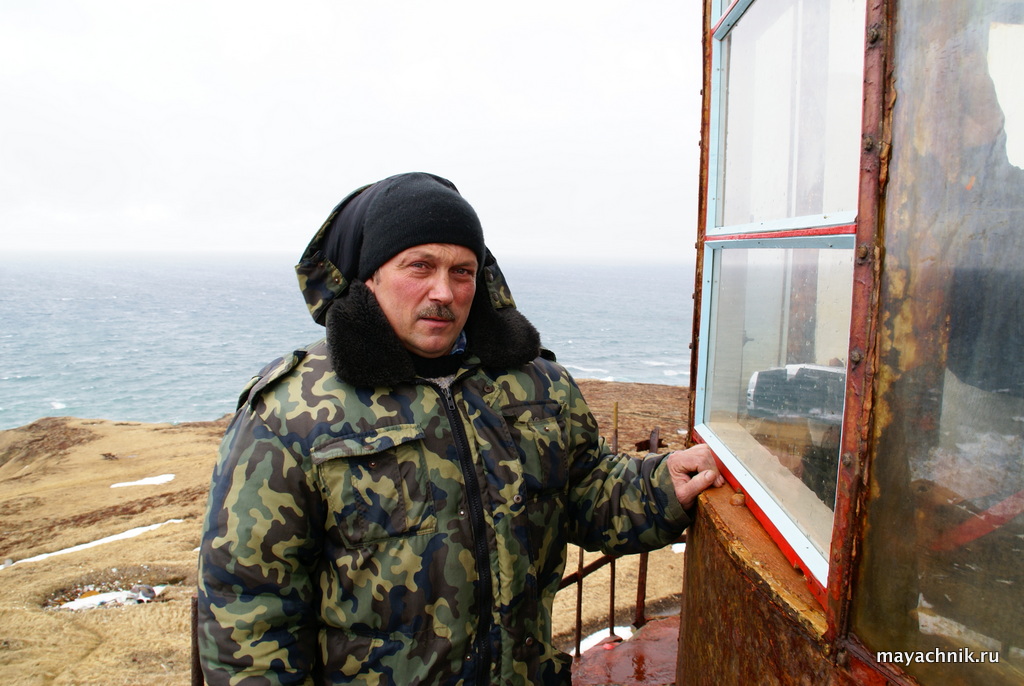




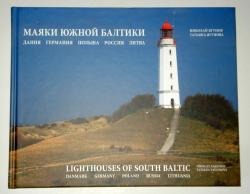 Фотоальбом Маяки Южной Балтики: Дания, Германия, Польша, Россия, Литва
Фотоальбом Маяки Южной Балтики: Дания, Германия, Польша, Россия, Литва
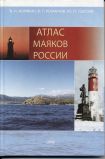
 Спец тираж памятных открыток маяк «Курбатова»
Спец тираж памятных открыток маяк «Курбатова»